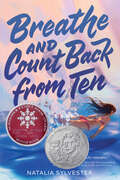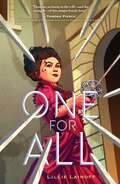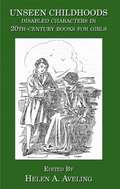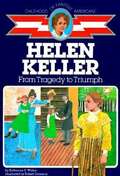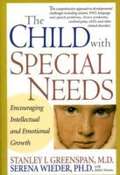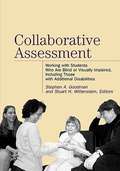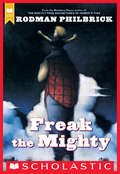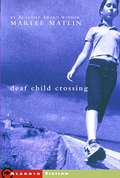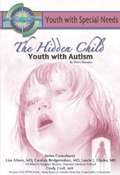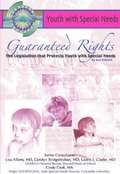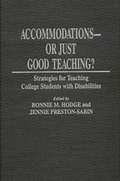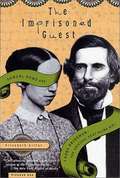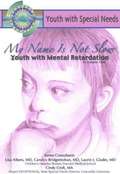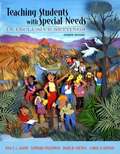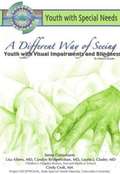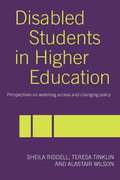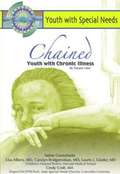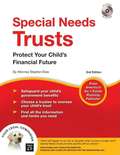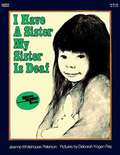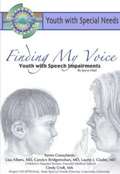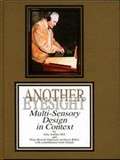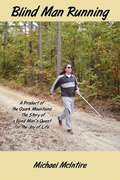Special Collections
Disability Collection
Description: Bookshare is pleased to offer a collection focused on the topic of disability and accessibility. #disability
- Table View
- List View
Lakelore
by Anna-Marie McLemoreIn this young adult novel by award-winning author Anna-Marie McLemore, two non-binary teens are pulled into a magical world under a lake - but can they keep their worlds above water intact? Everyone who lives near the lake knows the stories about the world underneath it, an ethereal landscape rumored to be half-air, half-water. But Bastián Silvano and Lore Garcia are the only ones who’ve been there. Bastián grew up both above the lake and in the otherworldly space beneath it. Lore’s only seen the world under the lake once, but that one encounter changed their life and their fate.Then the lines between air and water begin to blur. The world under the lake drifts above the surface. If Bastián and Lore don’t want it bringing their secrets to the surface with it, they have to stop it, and to do that, they have to work together. There’s just one problem: Bastián and Lore haven’t spoken in seven years, and working together means trusting each other with the very things they’re trying to hide.
Breathe and Count Back from Ten
by Natalia SylvesterIn this gorgeously written and authentic novel, Verónica, a Peruvian-American teen with hip dysplasia, auditions to become a mermaid at a Central Florida theme park in the summer before her senior year, all while figuring out her first real boyfriend and how to feel safe in her own body.Verónica has had many surgeries to manage her disability. The best form of rehabilitation is swimming, so she spends hours in the pool, but not just to strengthen her body.Her Florida town is home to Mermaid Cove, a kitschy underwater attraction where professional mermaids perform in giant tanks . . . and Verónica wants to audition. But her conservative Peruvian parents would never go for it. And they definitely would never let her be with Alex, her cute new neighbor.She decides it’s time to seize control of her life, but her plans come crashing down when she learns her parents have been hiding the truth from her—the truth about her own body.
One for All
by Lillie Lainoff“There are no limits to the will—and the strength—of this unique female hero.” —Tamora Pierce, writer of the Song of the Lioness and the Protector of the Small quartetsOne for All is a gender-bent retelling of The Three Musketeers, in which a girl with a chronic illness trains as a Musketeer and uncovers secrets, sisterhood, and self-love.Tania de Batz is most herself with a sword in her hand. Everyone thinks her near-constant dizziness makes her weak, nothing but “a sick girl.” But Tania wants to be strong, independent, a fencer like her father—a former Musketeer and her greatest champion. Then Papa is brutally, mysteriously murdered. His dying wish? For Tania to attend finishing school. But L’Académie des Mariées, Tania realizes, is no finishing school. It’s a secret training ground for new Musketeers: women who are socialites on the surface, but strap daggers under their skirts, seduce men into giving up dangerous secrets, and protect France from downfall. And they don’t shy away from a sword fight.With her newfound sisters at her side, Tania feels that she has a purpose, that she belongs. But then she meets Étienne, her target in uncovering a potential assassination plot. He’s kind, charming—and might have information about what really happened to her father. Torn between duty and dizzying emotion, Tania will have to decide where her loyalties lie…or risk losing everything she’s ever wanted.Lillie Lainoff's debut novel is a fierce, whirlwind adventure about the depth of found family, the strength that goes beyond the body, and the determination it takes to fight for what you love. Includes an author's note about her personal experience with Postural Orthostatic Tachycardia Syndrome.
Unseen Childhoods
by Helen A. AvelingThe nine essays in this collection break the 20th century into three periods - early, middle, and late. They cover the themes of stereotypes, role models, and inclusion and segregation, tracing their evolution across nearly a hundred years. Among the essays are "Modeling Illness in the Early 20th Century" by Helen A. Aveling; "A Choice of Virtues," by Deborah Kent; and "My Sibling the Other," by Rebecca R. Butler.
Helen Keller
by Katharine E. WilkieFocusing on her childhood years, this biography is about Helen Keller who overcame her handicaps with the help of her teacher Anne Sullivan.
The Child With Special Needs
by Stanley I. Greenspan and Serena WiederThis book describes various challenges that some children with special needs might face. The author goes into great detail about the floor time treatment method as well as describing the impact having a child with special needs has on the family.
Collaborative Assessment
by Stephen A. Goodman and Stuart H. WittensteinThis comprehensive text published by AFB in 2003 is the first to present assessment in a way that can be understood by professionals and families alike.
Freak the Mighty
by Rodman PhilbrickFreak the Mighty joins the Scholastic Gold line, which features award-winning and beloved novels. Includes exclusive bonus content!It has been over twenty years -- and more than two million copies, eight foreign editions, and a popular Miramax feature film -- since the world was introduced to this powerful story of a unique friendship between a troubled, oversized boy and the tiny, physically challenged genius who proves that courage comes in all sizes. This simple yet timeless story explores many themes, including bullying -- an important topic in today's schools. Freak the Mighty is sure to remain fresh, dramatic, and memorable for the next twenty years and beyond!
Deaf Child Crossing
by Marlee MatlinMegan is excited when Cindy moves into her neighborhood -- maybe she'll finally have a best friend. Sure enough, the two girls quickly become inseparable. Cindy even starts to learn sign language so they can communicate more easily.
But when they go away to summer camp together, problems arise. Cindy feels left out, because Megan is spending all of her time with Lizzie, another deaf girl; Megan resents that Cindy is always trying to help her, even when she doesn't need help. Before they can mend their differences, both girls have to learn what it means to be a friend.
A sensitive depiction of childhood friendship with its fragility, jealousies, and joys" - Booklist
The Hidden Child
by Sherry BonniceAutism presents unique challenges to the families and friends of young people with this condition. Some children with autism seem to be individuals of great contradiction--unable to perform well in one educational area, while having near-genius abilities in other areas. Children with autism may act withdrawn, unresponsive, or unemotional. They may at times seem impossible to understand. Challenges like these lead to many misunderstandings about autism and the abilities of children with this condition. In The Hidden Child: Youth with Autism, you will read the story of Livie and her brother Tucker, who has autism. As Livie and her parents experience the challenges that raising Tucker brings, the reader experiences the turmoil and strength needed to face the emotional roller coaster that autism can cause. As you read, you will not only learn about Livie's and Tucker's experiences. You will also learn facts about autism, what the symptoms of autism are, and where to turn for further information or help with issues related to autism. This book will also teach you about the different educational treatments that are available to help each unique child. Through early intervention, education, and further research, individuals with autism can lead more fulfilling lives.
Guaranteed Rights
by Joan EsherickFrom the Book jacket: A local modeling program denies thirteen-year-old Maria the chance to participate in its workshops. The reason? She uses a wheelchair. What should she do? The state of Alabama nearly pulls the plug on a disabled college student's medical support. Why? He was approaching his twenty-first birthday. Are there other avenues this teen can pursue? Employers reject nineteen-year-old Manuel's job application because he has a history of seizures, even though his seizures are completely controlled by medication and his last episode was more than five years ago. Can Manuel appeal? These cases reflect real teens in real circumstances. And all three represent how special needs legislation impacts youth with special needs. Youth with special needs want the chance to reach their potentials, despite the challenges they must overcome. Some face physical or medical challenges. Others have psychological or emotional disorders. Still others live in at-risk circumstances beyond their control. Some may even be in jail. American law affords all these young people certain rights and protections, regardless of their special needs. What are these rights? Where do they come from? Whom do they protect? Guaranteed Rights: The Legislation That Protects Youth with Special Needs will answer these and other questions. It examines the history, passage, and enforcement of special needs law as it relates to appropriate education, appropriate medical care, and equal access to jobs, public places, and services for all youth with special needs.
Accommodations--or Just Good Teaching?
by Bonnie M. Hodge and Jennie Preston-SabinThis is an excellent book for college professors, college students with disabilities, or people working with disabled college students. it explains the different accommendations available for these students, and what exactly the law covers. Definitely worth reading if you are a student planning to go to college and who have a disability.
The Imprisoned Guest
by Elisabeth GitterDid you ever wonder what inspired Helen Keller's mother to have such high hopes for her daughter? The answer is Laura Bridgman, the original deaf-blind girl who inspired Charles Darwin to visit her and also write about her in American Notes.
My Name is Not Slow
by Autumn LibalFrom the Book Jacket: When Mr. Brown peers through the glass window at his new daughter, she looks impossibly frail in the incubator. The doctors said shehas Down syndrome; she will have mental retardation. But what will that mean for Mr. Brown's daughter? What will she be able to do? Will she ever have talents like his other children? Will she feel joy from her accomplishments-or only pain from her limitations? Mental retardation is one of the most stigmatized disabilities in our society. People living with mental retardation are often treated as if they are simple, emotionless, child-like, or even less than human. And yet, individuals living with mental retardation have hopes and dreams, likes and dislikes, and talents and weaknesses just like anybody else. This book will help you learn about mental retardation, the special needs of individuals living with this form of disability, and the support systems available to help people with mental retardation acquire independence and success. As you read, you will meet Penelope Brown, one girl living with Down syndrome. Follow her story as she struggles both with her medical condition and with the ignorance of others. As you read, you will learn how Penelope and her family experience hope, disappointment, love, loss, and happiness as they learn what it means to live with mental retardation.
Teaching Students with Special Needs
by Tom E. C. Smith and Edward A. Polloway and James R. Patton and Carol A. Dowdythe one thing that will remain constant is the commitment to provide all students, regardless of their abilities or disabilities, with an equal opportunity to receive an appropriate education.
A Different Way of Seeing
by Patricia SouderKyla passed the ball to her teammate, then raced up the court. Somehow, she lost track of the orange globe and didn't see it again until right before it smashed into her left cheek. Kyla's head snapped. At courtside, a paramedic asked her to close her left eye and see with her right. "How's everything look?" "Just fine." The paramedic instructed her to close her right eye and look with her left. "How about now?" "I see bright, flashing lights, some black specks, and a dark cloud right where you should be." "In that case, you win some eye shields and a trip to the emergency room." In A Different Way of Seeing: Youth with Visual Impairments and Blindness, you will learn about many different visual disorders, what can cause them, and resources to help deal with the challenges visual impairments can bring. As you follow Kyla's story, you will learn what it is like to be visually impaired. Along the way, you will also learn about the resources and adaptive devices - like white canes, guide dogs, Braille, blind camps, music programs, and sports opportunities - available to help youth with blindness or vision impairment. People with vision impairments have many stories to tell - stories of determination, hope, and accomplishment.
Disabled Students in Higher Education
by Sheila Riddell and Teresa Tinklin and Alastair WilsonThe authors present results gleaned from eight higher education institutions in Great Britain which demonstrate the level of participation by disabled students.
Chained
by Autumn LibalFrom the Book jacket: The warm sun sliced through the window and melted across Kayla's bed. Slowly and reluctantly, Kayla rolled onto her side. Heavy with exhaustion and pain, she inched across the warm sheets. She felt as if someone had poured liquid metal into her body during the night-metal that had settled dense and cold in her bones. Gripping the bedpost with a white-knuckled hand, Kayla sucked in her breath. She closed her eyes, pulled herself up, and began the long journey to the bathroom. Inching along with shuffling feet and hunched back, Kayla looked much older than her fifteen years. She teetered dangerously, one hand outstretched for balance, one shoulder sliding along the wall for support. By the time she got to the bathroom door, she was already exhausted. What would it be like if you woke up every morning feeling sick? How would you get through each day if every minute brought you pain? What would you do if you had an illness that kept returning over and over again, refusing to be cured? Growing up is a challenge for everyone, but youth with chronic illnesses have additional challenges and special needs. These young people struggle to balance their physical conditions with the demands of school, friends, and activities. Living with chronic illness makes many young people feel alienated from their peers and may lead them to question their futures. In Chained: Youth with Chronic Illness, you will learn about the many challenges youth with chronic illness face and the support systems available to help them. Along the way, you will learn more about Kayla and her journey to live and thrive in the face of chronic illness.
Classroom Success for the Learning Disabled
by Suzanne H. StevensFrom The Book Jacket "Stevens has done it again! Her newest book on learning disabilities is lucid, accurate, insightful, practical, and it makes superb reading.... Her book provides the most helpful information I have seen for regular classroom teachers who are concerned with the realities and the nitty-gritties of helping LD children. My only regret is that the book has not been available for the last 20 years." DR. BARBARA BATEMAN University of Oregon "Stevens' book should be on the desk of every elementary and middle school teacher in every English-speaking country of the world. Stevens must have been an excellent classroom teacher, for she obviously understands both good elementary education and the learning-disabled child. Her book will go far to assist learning-disabled children toward a greater realization of their potentials." WILLIAM M. CRUICKSHANK, Ph.D. University of Michigan Between ten and twelve percent of the children in the U.S. are learning disabled. With such a large proportion of the population affected, the problem is not simply the concern of parents, LD individuals, and their teachers. It is the concern of society as a whole. In Classroom Success for the Learning Disabled, Suzanne Stevens discusses ways that we can help these children succeed in school and grow into productive adults. She offers practical suggestions on: Recognizing the LD child Adjusting teaching techniques Adapting texts and other materials Using LD specialists and psychologists effectively Adjusting classroom management procedures Testing and grading fairly Mainstreaming the LD child Stevens, a learning disabilities expert and a former classroom teacher, is the author of The Learning-Disabled Child: Ways That Parents Can Help. JOHN F. BLAIR, Publisher 1406 Plaza Drive Winston Salem, NC 27103 ISBN 0-89587-035-5 $8.95
Special Needs Trusts
by Stephen EliasIf you care for a child or other loved one with a disability, you've no doubt thought about what will happen when you're no longer able to give that care. Fortunately, there's a simple solution to this dilemma -- create a "special needs trust." Special Needs Trusts shows you how to leave any amount of money to your disabled loved one, without jeopardizing government benefits. It provides plain-English information and forms that let you create a special needs trust by modifying your will or living trust document.
I Have A Sister -- My Sister Is Deaf
by Jeanne Whitehouse PetersonA young deaf child who loves to run and jump and play is affectionately described by her older sister.
Finding My Voice
by Joyce LibalSpeech impairment is a common challenge among youth. Unfortunately, it is a challenge that, despite its frequency, can cause severe emotional and social distress for those who experience it. Stigma and prejudice can present particularly difficult emotional trials and social roadblocks to youth with speech impairments. All too often, these young people are assumed to be less capable, immature, or even unintelligent because of their communication barriers.
Arts, Culture, and Blindness
by Simon HayhoeThis book explores one of the most powerful myths in modern society: the myth that blind people are incapable of understanding and creating visual arts.
Another Eyesight
by Julia Ionides and Peter HowellThis book provides an overview and some in-depth information about the many ways of creating multi-sensory access for blind and partially sighted people to art, nature and historical sites.
Blind Man Running
by Michael McintireAutobiography of a blind man's journey through life as a traveling musician

